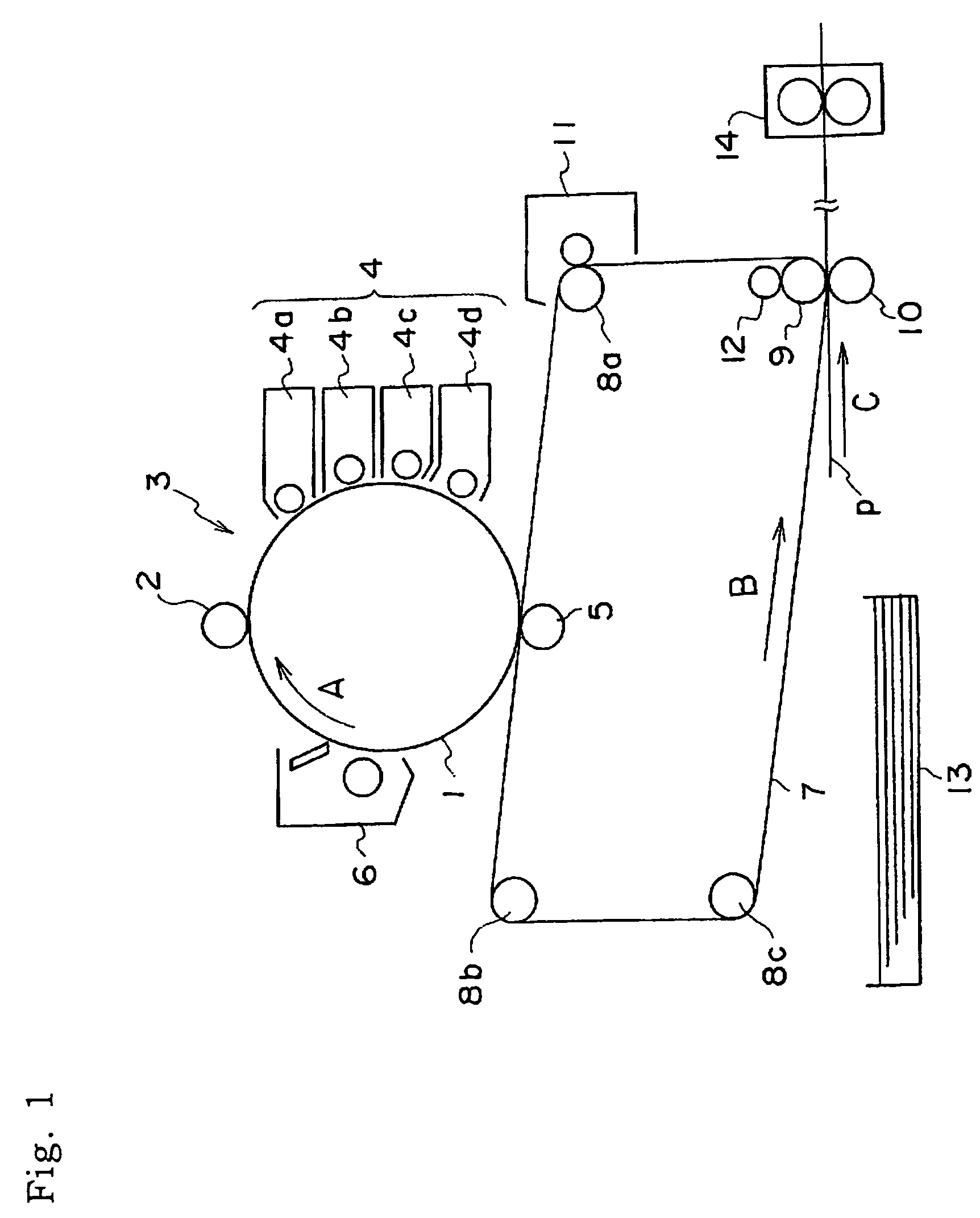Image forming method
a technology of image forming and photoreceptor, which is applied in the direction of electrographic process, electrographic process using charge pattern, instruments, etc., can solve the problems of deteriorating small-diameter toner, change in potential, etc., and achieves the reduction of image density, reducing the performance of the photoreceptor, and reducing the reduction of the transfer performance
- Summary
- Abstract
- Description
- Claims
- Application Information
AI Technical Summary
Benefits of technology
Problems solved by technology
Method used
Image
Examples
example 1
[0468]As a machine for evaluation, Vivace 400 modified machine manufactured by Fuji Xerox Co., Ltd. was loaded with the photoreceptor (1) as a photoreceptor. The electrostatic latent image developing agent (1) was used as the developing agent, and the resulting image was evaluated.
[0469]The Vivace 400 modified machine is an image forming device comprising an electrostatic latent image bearing body, charging means for charging the surface of the electrostatic latent image bearing body, electrostatic latent image-forming means of forming an electrostatic latent image on the charged surface of the electrostatic latent image bearing body, a development device, which contains the developing agent composed of the toner and carrier, for developing the electrostatic latent image with a layer of the developing agent formed on the surface of the developing agent-bearing body, to form a toner image on the surface of the electrostatic latent image bearing body, transfer means of transferring th...
example 6
[0480]A copying test was conducted in the same manner as in Example 1 except that the electrostatic latent image developing agent (6) was used in place of the electrostatic latent image developing agent (1), and the same evaluation was conducted.
[0481]The results are shown in Tables 1, 2 and 3.
example 7
[0482]A copying test was conducted in the same manner as in Example 1 except that the electrostatic latent image developing agent (7) was used in place of the electrostatic latent image developing agent (1), and the same evaluation was conducted.
[0483]The results are shown in Tables 1, 2 and 3.
PUM
| Property | Measurement | Unit |
|---|---|---|
| particle size | aaaaa | aaaaa |
| particle size | aaaaa | aaaaa |
| particle diameter | aaaaa | aaaaa |
Abstract
Description
Claims
Application Information
 Login to View More
Login to View More - R&D
- Intellectual Property
- Life Sciences
- Materials
- Tech Scout
- Unparalleled Data Quality
- Higher Quality Content
- 60% Fewer Hallucinations
Browse by: Latest US Patents, China's latest patents, Technical Efficacy Thesaurus, Application Domain, Technology Topic, Popular Technical Reports.
© 2025 PatSnap. All rights reserved.Legal|Privacy policy|Modern Slavery Act Transparency Statement|Sitemap|About US| Contact US: help@patsnap.com



